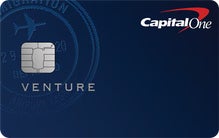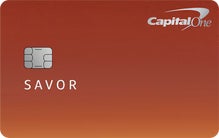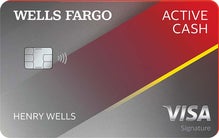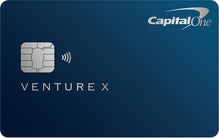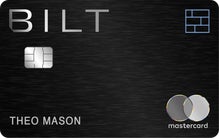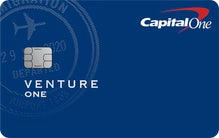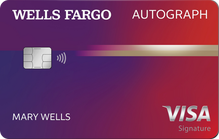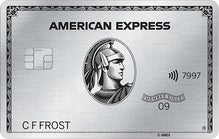Advertiser Disclosure
Bankrate.com is an independent, advertising-supported publisher and comparison service. We are compensated in exchange for the placement of sponsored products and services or by you clicking on certain links posted on our site. Therefore, this compensation may impact what products appear and how, where, and in what order they appear within listing categories, except where prohibited by law for our mortgage, home equity and other home lending products. Other factors, such as our proprietary website rules and whether a product is offered in your area or at your self-selected credit score range, can also impact how and where products appear on this site. While we strive to provide a wide range of offers, Bankrate does not include information about every financial or credit product or service.
Best rewards credit cards of May 2025
- • Credit cards
- • Personal finance
- • Rewards credit cards
- • Travel credit cards
- • Credit cards
- • Rewards credit cards
- • Rewards credit cards
- • Travel credit cards
- • Credit cards
- • Rewards credit cards
Advertiser Disclosure: Bankrate’s editorial team chooses and recommends the credit cards on this page. While we may receive compensation when users apply for cards through this page, our recommendations and card ratings are produced independently without influence by advertising partnerships with issuers.
- Chase Sapphire Preferred® Card: Best starter travel card
- Capital One Venture Rewards Credit Card: Best for travel bonus
- Capital One Savor Cash Rewards Credit Card: Best for entertainment
- Blue Cash Preferred® Card from American Express: Best for groceries
- Wells Fargo Active Cash® Card: Best for flat-rate cash rewards
- American Express® Gold Card: Best for foodies
- Prime Visa: Best for online shopping
- Discover it® Cash Back: Best for category variety
- Citi Strata Premier℠ Card: Best for hotel bookings
- Capital One Venture X Rewards Credit Card: Best for affordable travel perks
- Bilt Mastercard®: Best for paying rent
- Capital One VentureOne Rewards Credit Card: Best no-annual-fee travel card
- Wells Fargo Autograph® Card: Best for commuters
- The Platinum Card® from American Express: Best for luxury travel
- Citi Custom Cash® Card: Best for gas
How we make money
You have money questions. Bankrate has answers. Our experts have been helping you master your money for over four decades. We continually strive to provide consumers with the expert advice and tools needed to succeed throughout life’s financial journey.
Bankrate follows a strict editorial policy, so you can trust that our content is honest and accurate. Our award-winning editors and reporters create honest and accurate content to help you make the right financial decisions. The content created by our editorial staff is objective, factual, and not influenced by our advertisers.
We’re transparent about how we are able to bring quality content, competitive rates, and useful tools to you by explaining how we make money.
Bankrate.com is an independent, advertising-supported publisher and comparison service. We are compensated in exchange for placement of sponsored products and services, or by you clicking on certain links posted on our site. Therefore, this compensation may impact how, where and in what order products appear within listing categories, except where prohibited by law for our mortgage, home equity and other home lending products. Other factors, such as our own proprietary website rules and whether a product is offered in your area or at your self-selected credit score range, can also impact how and where products appear on this site. While we strive to provide a wide range of offers, Bankrate does not include information about every financial or credit product or service.
Bankrate has partnerships with issuers including, but not limited to, American Express, Bank of America, Capital One, Chase, Citi and Discover.
Compare Bankrate’s top rewards credit cards
| Our picks for | Rewards highlights | Learn more | ||
|---|---|---|---|---|
Last chance! Earn 100,000 intro bonus points after you spend $5,000 on purchases in the first 3 months from account opening. This offer ends at 9 AM EST on 5/15/2025. | Rewards value |
| $95 | |
Offer ends 5/12 Earn 75,000 miles once you spend $4,000 on purchases within the first 3 months of account opening, plus receive a one-time $250 Capital One Travel credit to use in your first cardholder year - that’s equal to $1,000 in travel. | Travel bonus |
| $95 | |
Entertainment + Best overall |
| $0 | ||
Groceries |
| $0 intro annual fee for the first year, then $95. | ||
Flat-rate cash rewards |
| $0 | ||
Food and travel |
| $325 | ||
Online shopping |
| $0 | ||
Category variety |
| $0 | ||
Hotel bookings |
| $95 | ||
Affordable travel perks |
| $395 | ||
Paying rent |
| $0 | ||
No-annual-fee travel card |
| $0 | ||
Everyday travel |
| $0 | ||
Luxury travel |
| $695 | ||
Gas |
| $0 |
Filter by
A FICO score/credit score is used to represent the creditworthiness of a person and may be one indicator to the credit type you are eligible for. However, credit score alone does not guarantee or imply approval for any financial product.
Showing 15 results
Last chance!
Earn 100,000 intro bonus points
Best for point value
Cardholder rating
This rating reflects the average overall score given by real cardholders in response to questions about this card's benefits, rewards, customer service, and data security.
Bankrate score
Our writers, editors and industry experts score credit cards based on a variety of factors including card features, bonus offers and independent research. Credit card issuers have no say or influence on how we rate cards. If you'd like to learn more about how we rank our cards, explore our ranking methodology here.
A FICO score/credit score is used to represent the creditworthiness of a person and may be one indicator to the credit type you are eligible for. However, credit score alone does not guarantee or imply approval for any financial product.
on Chase's secure site
See Rates & FeesIntro offer
Earn 100,000 intro bonus points
Rewards rate
1x - 5x
Annual fee
$95
Regular APR
19.99% - 28.24% Variable
Why you'll like this: It boasts terrific rewards value with its annual bonus points, practical bonus categories, high-value points and redemption flexibility.
Reward Details
- 5x5x on travel purchased through Chase Travel℠.
- 3x3x on dining, select streaming services and online groceries.
- 2x2x on all other travel purchases.
- 1x1x on all other purchases.
What you should know
Learn more: Is the Chase Sapphire Preferred worth it?
Alternatives: The Citi Strata Premier℠ Card could be more rewarding if you’d benefit from a larger pool of everyday reward categories and stronger benefits and rewards rates for hotel stays. However, the Capital One Venture Rewards Credit Card is worth considering if you just want straightforward, flat-rate rewards without sacrificing valuable transfer partners.
- Valuable perks like annual hotel statement credits and anniversary points bonus can carry enough value to easily justify the annual fee.
- High point redemption value makes this card one of the best options for occasional travelers who want to earn rewards on everyday spending.
- It doesn’t have flight-focused travel perks like airport lounge access or free checked bags.
- The card's grocery rewards rate only applies to eligible online grocery purchases, which could limit its appeal as a standalone option for everyday rewards.
Card Details
Earn 100,000 bonus points after you spend $5,000 on purchases in the first 3 months from account opening.
Enjoy benefits such as 5x on travel purchased through Chase Travel℠, 3x on dining, select streaming services and online groceries, 2x on all other travel purchases, 1x on all other purchases, $50 Annual Chase Travel Hotel Credit, plus more.
Get 25% more value when you redeem for airfare, hotels, car rentals and cruises through Chase Travel℠. For example, 60,000 points are worth $750 toward travel.
Count on Trip Cancellation/Interruption Insurance, Auto Rental Collision Damage Waiver, Lost Luggage Insurance and more.
Get complimentary access to DashPass which unlocks $0 delivery fees and lower service fees for a minimum of one year when you activate by December 31, 2027.
Member FDIC
Offer ends 5/12
Earn 75,000 miles + $250 Capital One Travel credit
Best for travel bonus
Cardholder rating
This rating reflects the average overall score given by real cardholders in response to questions about this card's benefits, rewards, customer service, and data security.
Bankrate score
Our writers, editors and industry experts score credit cards based on a variety of factors including card features, bonus offers and independent research. Credit card issuers have no say or influence on how we rate cards. If you'd like to learn more about how we rank our cards, explore our ranking methodology here.
A FICO score/credit score is used to represent the creditworthiness of a person and may be one indicator to the credit type you are eligible for. However, credit score alone does not guarantee or imply approval for any financial product.
on Capital One's secure site
See Rates & FeesIntro offer
Earn 75,000 miles + $250 Capital One Travel credit
Rewards rate
2 Miles - 5 Miles
Annual fee
$95
Regular APR
19.99% - 29.24% (Variable)
Why you'll like this: It boasts solid short- and long-term value with its flat rewards rate and new welcome offer, which offers a terrific return on spend.
Reward Details
- 5 Miles5 Miles per dollar on hotels, vacation rentals and rental cars booked through Capital One Travel
- 2 Miles2 Miles per dollar on every purchase, every day
What you should know
Learn more: Why expert Jacqueline DeMarco loves the Capital One Venture
Alternative: Frequent travelers may find the Capital One Venture X Rewards Credit Card more lucrative overall thanks to its higher-value — but still practical — perks and annual credits.
- Its welcome offer includes a generous amount of miles for your first cardholder year. That’s tremendous value for a mid-tier travel card.
- Its statement credits for perks like expedited security screening and its high-value, transferable miles make the already-low annual fee easy to offset.
- The welcome offer has a high spend requirement, so it may not be easy to attain.
- Some competitors provide more eye-catching perks like annual hotel credits, account anniversary bonus points and ridesharing perks.
Card Details
Enjoy $250 to use on Capital One Travel in your first cardholder year, plus earn 75,000 bonus miles once you spend $4,000 on purchases within the first 3 months from account opening - that’s equal to $1,000 in travel
Earn unlimited 2X miles on every purchase, every day
Earn 5X miles on hotels, vacation rentals and rental cars booked through Capital One Travel, where you'll get Capital One's best prices on thousands of trip options
Miles won't expire for the life of the account and there's no limit to how many you can earn
Receive up to a $120 credit for Global Entry or TSA PreCheck®
Use your miles to get reimbursed for any travel purchase—or redeem by booking a trip through Capital One Travel
Enjoy a $50 experience credit and other premium benefits with every hotel and vacation rental booked from the Lifestyle Collection
Transfer your miles to your choice of 15+ travel loyalty programs
Best for entertainment
Cardholder rating
This rating reflects the average overall score given by real cardholders in response to questions about this card's benefits, rewards, customer service, and data security.
Bankrate score
Our writers, editors and industry experts score credit cards based on a variety of factors including card features, bonus offers and independent research. Credit card issuers have no say or influence on how we rate cards. If you'd like to learn more about how we rank our cards, explore our ranking methodology here.
A FICO score/credit score is used to represent the creditworthiness of a person and may be one indicator to the credit type you are eligible for. However, credit score alone does not guarantee or imply approval for any financial product.
on Capital One's secure site
See Rates & FeesIntro offer
Earn $200 Cash Back
Rewards rate
1% - 8%
Annual fee
$0
Regular APR
19.24% - 29.24% (Variable)
Why you'll like this: Its boosted cash back rate in popular spending categories makes it great as both a standalone option and a companion to other cards from the issuer.
Reward Details
- 8%8% Cash Back on Capital One Entertainment purchases
- 5%5% Cash Back on hotels and rental cars booked through Capital One Travel (terms apply)
- 3%3% Cash Back at grocery stores (excluding superstores like Walmart® and Target®), on dining, entertainment and popular streaming services
- 1%1% Cash Back on all other purchases
What you should know
Learn more: Is the Capital One Savor worth it?
Alternative: If you don’t spend much at the grocery store or on entertainment, then the Chase Freedom Unlimited® may be a better option. You'll earn cash back in multiple bonus categories (including dining) and a flat rewards rate on all other eligible purchases.
- It’s easily one of the most well-rounded rewards cards available thanks to its generous cash back rates and variety, accessible welcome offer and long intro APR periods.
- It offers automatic cash back redemption — a relatively rare option that can make the rewards experience even easier.
- Superstores and wholesale clubs like Walmart, Target, BJ’s and Sam’s Club do not count for elevated rewards rates, which may limit your potential earnings.
- A card with higher dining or grocery rewards rates could offer more value, even if that means paying an annual fee.
Card Details
Earn a one-time $200 cash bonus once you spend $500 on purchases within the first 3 months from account opening
Earn unlimited 3% cash back at grocery stores (excluding superstores like Walmart® and Target®), on dining, entertainment and popular streaming services, plus 1% on all other purchases
Earn 8% cash back on Capital One Entertainment purchases
Earn unlimited 5% cash back on hotels and rental cars booked through Capital One Travel, where you'll get Capital One's best prices on thousands of trip options. Terms apply
No rotating categories or sign-ups needed to earn cash rewards; plus cash back won't expire for the life of the account and there's no limit to how much you can earn
0% intro APR on purchases and balance transfers for 15 months; 19.24% - 29.24% variable APR after that; balance transfer fee applies
No foreign transaction fee
No annual fee
Best for groceries
Cardholder rating
This rating reflects the average overall score given by real cardholders in response to questions about this card's benefits, rewards, customer service, and data security.
Bankrate score
Our writers, editors and industry experts score credit cards based on a variety of factors including card features, bonus offers and independent research. Credit card issuers have no say or influence on how we rate cards. If you'd like to learn more about how we rank our cards, explore our ranking methodology here.
A FICO score/credit score is used to represent the creditworthiness of a person and may be one indicator to the credit type you are eligible for. However, credit score alone does not guarantee or imply approval for any financial product.
on American Express's secure site
See Rates & Fees, Terms ApplyIntro offer
Earn $250
Rewards rate
1% - 6%
Annual fee
$0 intro annual fee for the first year, then $95.
APR
20.24%-29.24% Variable
Why you'll like this: It boasts the highest cash back rate available at U.S. supermarkets.
Reward Details
- 6%6% Cash Back at U.S. supermarkets on up to $6,000 per year in purchases (then 1%).
- 6%6% Cash Back on select U.S. streaming subscriptions.
- 3%3% Cash Back at U.S. gas stations and on transit (including taxis/rideshare, parking, tolls, trains, buses and more).
- 1%1% Cash Back on other purchases.
What you should know
Learn more: Why expert Ted Rossman loves the Blue Cash Preferred
Alternative: A flat-rate card like the Wells Fargo Active Cash Card could provide better value at superstores (like Target and Walmart) or wholesale clubs (like Costco or Sam’s Club). And if the annual fee is a deal-breaker, the Blue Cash Everyday® Card from American Express or the Bank of America® Customized Cash Rewards credit card may work for smaller budgets.
- The card also offers unlimited 6 percent back on select U.S. streaming subscriptions — one of the best rates available in that category.
- Few premium cards offer intro APR periods, but this card provides an intro APR on purchases and balance transfers — handy for chipping away at the cost of large expenses over time.
- Your only redemption options are statement credits, gift cards or merchandise.
- Purchases at wholesale clubs, superstores (like Walmart), and specialty stores (bakeries, farmers markets, etc.) are excluded from the card’s U.S. supermarket bonus category and only earn 1 percent back.
Card Details
Earn a $250 statement credit after you spend $3,000 in eligible purchases on your new Card within the first 6 months.
$0 intro annual fee for the first year, then $95.
Buy Now, Pay Later: Enjoy $0 intro plan fees when you use Plan It® to split up large purchases into monthly installments with a fixed fee. Pay $0 intro plan fees on plans created during the first 12 months from the date of account opening. Plans created after that will have a monthly plan fee up to 1.33% of each eligible purchase amount moved into a plan based on the plan duration, the APR that would otherwise apply to the purchase, and other factors.
Low Intro APR: 0% intro APR on purchases and balance transfers for 12 months from the date of account opening. After that, your APR will be a variable APR of 20.24% - 29.24%.
6% Cash Back at U.S. supermarkets on up to $6,000 per year in purchases (then 1%).
6% Cash Back on select U.S. streaming subscriptions.
3% Cash Back at U.S. gas stations and on transit (including taxis/rideshare, parking, tolls, trains, buses and more).
1% Cash Back on other purchases.
Cash Back is received in the form of Reward Dollars that can be redeemed as a statement credit or at Amazon.com checkout.
$84 Disney Bundle Credit: With your enrolled Blue Cash Preferred® Card, spend $9.99 or more each month on an auto-renewing Disney Bundle subscription, to receive a monthly statement credit of $7. Valid only at Disney Plus.com, Hulu.com or Plus.espn.com in the U.S.
Apply with confidence. Know if you're approved for a Card with no impact to your credit score. If you're approved and you choose to accept this Card, your credit score may be impacted.
Terms Apply.
Best for flat-rate cash rewards
Bankrate score
Our writers, editors and industry experts score credit cards based on a variety of factors including card features, bonus offers and independent research. Credit card issuers have no say or influence on how we rate cards. If you'd like to learn more about how we rank our cards, explore our ranking methodology here.
A FICO score/credit score is used to represent the creditworthiness of a person and may be one indicator to the credit type you are eligible for. However, credit score alone does not guarantee or imply approval for any financial product.
on Wells Fargo's secure site
See Rates & FeesIntro offer
$200 cash rewards
Rewards rate
2%
Annual fee
$0
Regular APR
19.24%, 24.24%, or 29.24% Variable APR
Why you'll like this: It earns cash back at a consistent rate — and you can redeem it at an ATM.
Reward Details
- 2%Earn unlimited 2% cash rewards on purchases
What you should know
Learn more: Expert Aja McClanahan discusses if the Wells Fargo Active Cash is worth it
Alternative: The Citi Double Cash® Card may be a better option if you’re looking for a long intro APR balance transfer offer. The Chase Freedom Unlimited® could also be more valuable thanks to its additional 3 percent cash back categories.
- Paying your monthly cellphone bill with your card earns you cellphone protection, a relatively valuable perk.
- You can redeem your rewards as physical cash in $20 increments when you use a Wells Fargo ATM — a convenient option missing from many rewards cards.
- Though it comes with Visa Signature® features, the Active Cash card's extra perks are otherwise limited.
- You cannot transfer rewards to airline or hotel loyalty programs and can only redeem through Wells Fargo.
Card Details
Apply Now to take advantage of this offer and learn more about product features, terms and conditions.
Earn a $200 cash rewards bonus after spending $500 in purchases in the first 3 months.
Earn unlimited 2% cash rewards on purchases.
0% intro APR for 12 months from account opening on purchases and qualifying balance transfers. 19.24%, 24.24%, or 29.24% Variable APR thereafter; balance transfers made within 120 days qualify for the intro rate and fee of 3% then a BT fee of up to 5%, min: $5.
$0 annual fee.
No categories to track or remember and cash rewards don't expire as long as your account remains open.
Find tickets to top sports and entertainment events, book travel, make dinner reservations and more with your complimentary 24/7 Visa Signature® Concierge.
Up to $600 of cell phone protection against damage or theft. Subject to a $25 deductible.
Best for food and travel
Cardholder rating
This rating reflects the average overall score given by real cardholders in response to questions about this card's benefits, rewards, customer service, and data security.
Bankrate score
Our writers, editors and industry experts score credit cards based on a variety of factors including card features, bonus offers and independent research. Credit card issuers have no say or influence on how we rate cards. If you'd like to learn more about how we rank our cards, explore our ranking methodology here.
A FICO score/credit score is used to represent the creditworthiness of a person and may be one indicator to the credit type you are eligible for. However, credit score alone does not guarantee or imply approval for any financial product.
on American Express's secure site
See Rates & Fees, Terms ApplyIntro offer
Earn 60,000 points
Rewards rate
1X - 4X
Annual fee
$325
APR
See Pay Over Time APR
Why you'll like this: Along with its terrific perks for foodies, it offers valuable rewards on everyday spending.
Reward Details
- 4XEarn 4X Membership Rewards® points per dollar spent on purchases at restaurants worldwide, on up to $50,000 in purchases per calendar year, then 1X points for the rest of the year.
- 4XEarn 4X Membership Rewards® points per dollar spent at US supermarkets, on up to $25,000 in purchases per calendar year, then 1X points for the rest of the year.
- 3XEarn 3X Membership Rewards® points per dollar spent on flights booked directly with airlines or on AmexTravel.com.
- 2XEarn 2X Membership Rewards® points per dollar spent on prepaid hotels and other eligible purchases booked on AmexTravel.com.
- 1XEarn 1X Membership Rewards® point per dollar spent on all other eligible purchases.
What you should know
“What I love most about having an Amex rewards card is its valuable rewards — Bankrate values Membership Rewards points at around 2.0 cents per point. So when I use my card for groceries, dining or travel, I know the rewards I earn will go a long way when redeemed with Amex’s transfer partners or through Amex Travel.” – Madison Hoehn, Bankrate credit cards editor
Learn more: Why expert Matt Bundrick loves the Amex Gold
Alternative: The Platinum Card® from American Express and the Chase Sapphire Reserve® are smart picks since both offer better travel perks, rewards and protections. But the Capital One Savor or Chase Sapphire Preferred could be a better fit if you want excellent dining and grocery rewards for a more modest annual fee.
- Transferring points to partner airline or hotel loyalty programs, which include popular brands like Delta and Hilton, can get you more value.
- You can earn additional rewards by enrolling in Amex Offers.
- You'll need to use the annual credits or transfer points for travel frequently to offset the annual fee.
- Your points are worth much less if you redeem them to cover dining purchases or any travel purchases other than airfare (they’re often worth half as much or less).
Card Details
Earn 60,000 Membership Rewards® Points after you spend $6,000 on eligible purchases on your new Card in your first 6 months of Card Membership.
Earn 4X Membership Rewards® points per dollar spent on purchases at restaurants worldwide, on up to $50,000 in purchases per calendar year, then 1X points for the rest of the year.
Earn 4X Membership Rewards® points per dollar spent at US supermarkets, on up to $25,000 in purchases per calendar year, then 1X points for the rest of the year.
Earn 3X Membership Rewards® points per dollar spent on flights booked directly with airlines or on AmexTravel.com.
Earn 2X Membership Rewards® points per dollar spent on prepaid hotels and other eligible purchases booked on AmexTravel.com.
Earn 1X Membership Rewards® point per dollar spent on all other eligible purchases.
$120 Uber Cash on Gold: Add your Gold Card to your Uber account and get $10 in Uber Cash each month to use on orders and rides in the U.S. when you select an American Express Card for your transaction. That’s up to $120 Uber Cash annually. Plus, after using your Uber Cash, use your Card to earn 4X Membership Rewards® points for Uber Eats purchases made at restaurants or U.S. supermarkets. Point caps and terms apply.
$84 Dunkin' Credit: With the $84 Dunkin' Credit, you can earn up to $7 in monthly statement credits after you enroll and pay with the American Express® Gold Card at U.S. Dunkin' locations.
$100 Resy Credit: Get up to $100 in statement credits each calendar year after you pay with the American Express® Gold Card to dine at U.S. Resy restaurants or make other eligible Resy purchases. That's up to $50 in statement credits semi-annually. Enrollment required.
$120 Dining Credit: Satisfy your cravings, sweet or savory, with the $120 Dining Credit. Earn up to $10 in statement credits monthly when you pay with the American Express® Gold Card at Grubhub, The Cheesecake Factory, Goldbelly, Wine.com, and Five Guys. Enrollment required.
Explore over 1,000 upscale hotels worldwide with The Hotel Collection and receive a $100 credit towards eligible charges* with every booking of two nights or more through AmexTravel.com. *Eligible charges vary by property.
No Foreign Transaction Fees.
Annual Fee is $325.
Apply with confidence. Know if you're approved for a Card with no impact to your credit score. If you're approved and you choose to accept this Card, your credit score may be impacted.
Terms Apply.
Best for online shopping
Bankrate score
Our writers, editors and industry experts score credit cards based on a variety of factors including card features, bonus offers and independent research. Credit card issuers have no say or influence on how we rate cards. If you'd like to learn more about how we rank our cards, explore our ranking methodology here.
A FICO score/credit score is used to represent the creditworthiness of a person and may be one indicator to the credit type you are eligible for. However, credit score alone does not guarantee or imply approval for any financial product.
on Amazon's secure site
See Rates & FeesIntro offer
Get a $150 Amazon Gift Card
Rewards rate
1% - 10%
Annual fee
$0
Regular APR
19.49% - 28.24% Variable
Why you'll like this: It boasts a terrific rewards rate on Amazon purchases, which can cover a slew of household items, entertainment, gifts, food and more.
Reward Details
- 10%Prime Card Bonus: Earn 10% back or more on a rotating selection of items and categories on Amazon.com with an eligible Prime membership
- 5%Earn unlimited 5% back at Amazon.com, Amazon Fresh, Whole Foods Market, and on Chase Travel purchases with an eligible Prime membership
- 2%Earn unlimited 2% back at gas stations, restaurants, and on local transit and commuting (including rideshare)
- 1%Earn unlimited 1% back on all other purchases
What you should know
Learn more: What card expert Holly Johnson loves about the Prime Visa
Alternative: If you want to earn rewards on groceries and online shopping without being stuck buying from Amazon.com or Whole Foods, consider the Blue Cash Everyday card. It offers a solid rewards rate on both U.S. online retail purchases and at U.S. supermarkets, making it a more flexible but still lucrative option.
- The sign-up bonus is lower than other no-annual-fee rewards card bonuses, but you’ll earn it instantly on approval, with no spending requirement to worry about.
- Unlocks exclusive pay-over-time financing on eligible Amazon purchases, giving you a chance to chip away at large expenses without stressing over interest charges (terms apply).
- For a no-annual-fee general rewards card, Prime Visa offers significant travel benefits like no foreign transaction fees, lost luggage reimbursement and travel accident insurance.
- It doesn’t carry a traditional intro APR, so you can’t finance non-Amazon purchases with a 0 percent APR.
- An Amazon Prime membership runs $139 per year, so the bonus rates might be only worth it if you already are or plan to become a member.
Card Details
Get a $150 Amazon Gift Card instantly upon approval exclusively for Prime members
Earn unlimited 5% back at Amazon.com, Amazon Fresh, Whole Foods Market and on Chase Travel purchases with an eligible Prime membership
Prime Card Bonus: Earn 10% back or more on a rotating selection of items and categories on Amazon.com with an eligible Prime membership
Earn unlimited 2% back at gas stations, restaurants, and on local transit and commuting (including rideshare)
Earn unlimited 1% back on all other purchases
No annual credit card fee
No more waiting. Redeem daily rewards at Amazon.com as soon as the next day
Member FDIC
Best for category variety
Cardholder rating
This rating reflects the average overall score given by real cardholders in response to questions about this card's benefits, rewards, customer service, and data security.
Bankrate score
Our writers, editors and industry experts score credit cards based on a variety of factors including card features, bonus offers and independent research. Credit card issuers have no say or influence on how we rate cards. If you'd like to learn more about how we rank our cards, explore our ranking methodology here.
A FICO score/credit score is used to represent the creditworthiness of a person and may be one indicator to the credit type you are eligible for. However, credit score alone does not guarantee or imply approval for any financial product.
on Discover's secure site
See Rates & FeesIntro offer
Cashback Match
Rewards rate
1% - 5%
Annual fee
$0
Regular APR
18.24% - 27.24% Variable APR
Why you'll like this: It offers the best rewards rate you can get in several popular categories over the course of the year.
Reward Details
- 5%Earn 5% Cashback Bonus® at Grocery Stores and Wholesale Clubs, April 1 through June 30, 2025, on up to $1,500 in purchases, when you activate.
- 1%Plus, earn unlimited 1% cash back on all other purchases.
What you should know
Learn more: Why expert Holly Johnson loves the Discover it® Cash Back
Alternative: You may get more value from the Chase Freedom Flex®. Along with its rotating bonus categories, the card offers year-round cash back on dining and drugstore purchases, which can offer value when a quarterly category doesn’t align with your spending.
- It’s one of the best cash back cards on the market if you’re looking for minimal fees: no annual fee, foreign transaction fees, penalty APR or fee on your first late payment (up to $41 after that). You’ll also enjoy solid intro APR offers and a decent ongoing APR.
- Its rotating bonus category variety is nearly unmatched, typically including everything from groceries to online shopping.
- You must activate and track your bonus categories each quarter, which could make the card too high-maintenance for some applicants.
- The card carries hardly any additional features (like travel insurance or other credits) beyond its rewards and low rates and fees.
- It has a quarterly spending cap for bonus categories.
Card Details
Intro Offer: Unlimited Cashback Match for all new cardmembers–only from Discover. Discover will automatically match all the cash back you’ve earned at the end of your first year! There’s no minimum spending or maximum rewards. You could turn $150 cash back into $300.
Earn 5% Cashback Bonus® at Grocery Stores and Wholesale Clubs, April 1 through June 30, 2025, on up to $1,500 in purchases, when you activate. Plus, earn unlimited 1% cash back on all other purchases.
Redeem your rewards for cash at any time.
Apply and you could get a decision in as little as 60 seconds. No annual fee.
Start shopping and earning rewards in minutes with your digital card, before your physical card arrives in the mail, if eligible.
Discover could help you reduce exposure of your personal information online by helping you remove it from select people-search sites that could sell your data. Activate by mobile app for free.
Get a 0% intro APR for 15 months on purchases. Then 18.24% to 27.24% Standard Variable Purchase APR applies, based on credit worthiness.
Terms and conditions apply.
Best for hotel bookings
Bankrate score
Our writers, editors and industry experts score credit cards based on a variety of factors including card features, bonus offers and independent research. Credit card issuers have no say or influence on how we rate cards. If you'd like to learn more about how we rank our cards, explore our ranking methodology here.
A FICO score/credit score is used to represent the creditworthiness of a person and may be one indicator to the credit type you are eligible for. However, credit score alone does not guarantee or imply approval for any financial product.
on Citi's secure site
See Rates & FeesIntro offer
Earn 60,000 bonus ThankYou® Points
Rewards rate
1X - 10X
Annual fee
$95
Regular APR
20.24% - 28.24% (Variable)
Why you'll like this: It has a valuable welcome offer and an annual hotel credit that can easily offset its annual fee.
Reward Details
- 10XEarn 10 Points per $1 spent on Hotels, Car Rentals, and Attractions booked on CitiTravel.com.
- 3XEarn 3 Points per $1 on Air Travel and Other Hotel Purchases, at Restaurants, Supermarkets, Gas and EV Charging Stations.
- 1XEarn 1 Point per $1 spent on all other purchases
What you should know
Alternatives: The Chase Sapphire Preferred® Card may offer more value for both frequent travelers and everyday spenders, thanks mostly to its high point redemption value. And while its hotel perk is only worth up to $50 in annual statement credits toward hotel stays through Chase Travel, you’ll only need to spend $50 to earn it (versus $500 with the Strata Premier).
- It offers rewards in several everyday spending categories, so it should be easy to earn travel points even if you don’t actually spend a ton on travel.
- It stacks exceptionally well with no-annual-fee Citi rewards cards, giving you a chance to maximize your rewards in nearly every major spending category.
- You’ll only earn the annual hotel benefit if you book a single hotel stay of $500 or more (excluding taxes and fees) through CitiTravel.com. That’s pretty inflexible.
- Bankrate estimates that Citi rewards carry a lower average redemption value (around 1.6 cents per point) than several competing programs (some of which offer 2 cents per point or more in value).
Card Details
Earn 60,000 bonus ThankYou® Points after spending $4,000 in the first 3 months of account opening, redeemable for $600 in gift cards or travel rewards at thankyou.com.
Earn 10 Points per $1 spent on Hotels, Car Rentals, and Attractions booked on CitiTravel.com.
Earn 3 Points per $1 on Air Travel and Other Hotel Purchases, at Restaurants, Supermarkets, Gas and EV Charging Stations.
Earn 1 Point per $1 spent on all other purchases
$100 Annual Hotel Benefit: Once per calendar year, enjoy $100 off a single hotel stay of $500 or more (excluding taxes and fees) when booked through CitiTravel.com. Benefit applied instantly at time of booking.
No expiration and no limit to the amount of points you can earn with this card
No Foreign Transaction Fees on purchases
Best for affordable travel perks
Cardholder rating
This rating reflects the average overall score given by real cardholders in response to questions about this card's benefits, rewards, customer service, and data security.
Bankrate score
Our writers, editors and industry experts score credit cards based on a variety of factors including card features, bonus offers and independent research. Credit card issuers have no say or influence on how we rate cards. If you'd like to learn more about how we rank our cards, explore our ranking methodology here.
A FICO score/credit score is used to represent the creditworthiness of a person and may be one indicator to the credit type you are eligible for. However, credit score alone does not guarantee or imply approval for any financial product.
on Capital One's secure site
See Rates & FeesIntro offer
Earn 75,000 miles
Rewards rate
2 Miles - 10 Miles
Annual fee
$395
Regular APR
19.99% - 29.24% (Variable)
Why you'll like this: You’ll get access to a handful of the most useful and valuable travel perks out there without breaking the bank.
Reward Details
- 10 Miles10 Miles per dollar on hotels and rental cars booked through Capital One Travel
- 5 Miles5 Miles per dollar on flights and vacation rentals booked through Capital One Travel
- 2 Miles2 Miles per dollar on every purchase, every day
What you should know
“If I’m ever not sure what card to use for a purchase, I use this card. Earning rewards at a solid flat rate on a card with plenty of redemption options is never a bad move in my book.” – Ryan Flanigan, Bankrate credit cards writer
Learn more: Why the Capital One Venture X is great for saving on your next trip
Alternative: If you don't think you'll use Venture X’s features, consider a lower-cost travel card instead. The base Venture card also earns a flat 2X miles, while the Chase Sapphire Preferred can offer higher redemption value and other bonus categories beyond travel.
- The card's travel perks easily offer enough value to make the card worth it.
- You’ll also enjoy Visa Infinite benefits (including exclusive travel concierge service) and the Capital One Travel portal’s AI-powered pricing perks for more affordable bookings.
- It’s missing a number of the luxury benefits you’ll find on rival cards, like an annual CLEAR membership credit, complimentary hotel or airline loyalty status and other airline hotel and restaurant partner perks.
- Its biggest drawback is perhaps Capital One’s lack of major domestic airline partners, which limits the value of your miles compared to rewards on other travel cards.
Card Details
Earn 75,000 bonus miles when you spend $4,000 on purchases in the first 3 months from account opening, equal to $750 in travel
Receive a $300 annual credit for bookings through Capital One Travel, where you'll get Capital One's best prices on thousands of trip options
Get 10,000 bonus miles (equal to $100 towards travel) every year, starting on your first anniversary
Earn unlimited 10X miles on hotels and rental cars booked through Capital One Travel and 5X miles on flights and vacation rentals booked through Capital One Travel
Earn unlimited 2X miles on all other purchases
Enjoy complimentary access to 1,300+ airport lounges worldwide, including Capital One Lounge locations and the Partner Lounge Network
Use your Venture X miles to easily cover travel expenses, including flights, hotels, rental cars and more—you can even transfer your miles to your choice of 15+ travel loyalty programs
Enjoy a $100 experience credit and other premium benefits with every hotel and vacation rental booked from the Premier Collection
Receive up to a $120 credit for Global Entry or TSA PreCheck®
Best for paying rent
Cardholder rating
This rating reflects the average overall score given by real cardholders in response to questions about this card's benefits, rewards, customer service, and data security.
Bankrate score
Our writers, editors and industry experts score credit cards based on a variety of factors including card features, bonus offers and independent research. Credit card issuers have no say or influence on how we rate cards. If you'd like to learn more about how we rank our cards, explore our ranking methodology here.
A FICO score/credit score is used to represent the creditworthiness of a person and may be one indicator to the credit type you are eligible for. However, credit score alone does not guarantee or imply approval for any financial product.
on Bilt's secure site
See Rates & FeesIntro offer
N/A
Rewards rate
1X Points - 3X Points
Annual fee
$0
Regular APR
See Terms
Why you'll like this: It allows you to earn rewards on what's probably your biggest monthly expense — your rent payments.
Reward Details
- 3X Points3x points on dining
- 2X Points2x points on travel
- 1X Points1x points on other purchases
- 1X PointsEarn 1x points on rent without the transaction fee, up to 100,000 points in a calendar year. When you use the card 5 times each statement period using your Bilt Mastercard, you'll earn points on rent and qualifying net purchases.
What you should know
“This card comes out in full force on the first of the month. The Rent Day promo is a great way for me to earn points to cover many travel expenses.” – Ryan Flanigan, Bankrate credit cards writer
Alternative: A no-annual-fee cash back card with everyday categories and additional redemption options, like the Capital One Savor Cash Rewards Credit Card, could be better for everyday savings. You may also earn more rewards on your utilities and other household expenses with a flat-rate card like the Wells Fargo Active Cash® Card.
- Bilt points currently rank as some of the most valuable rewards on the market, based on Bankrate’s latest points and miles valuations.
- It carries a solid set of perks for a no-annual-fee card, including travel and purchase protections and ongoing credits for Lyft.
- Redemption options are limited, and you can’t opt for regular cash back. Your main options are redeeming to cover future rent payments, a home down payment or select travel.
- You have to make at least five transactions each statement period with the card before rewards rates apply.
Card Details
$0 Annual Fee
Earn 1x points on rent payments without the transaction fee, up to 100,000 points each calendar year
Earns 3x points on dining
Earn 2x points on travel
Earn 1x points on other purchases
Earn double points on the first of each month (excluding rent, up to 1,000 bonus points)
Use the card 5 times each statement period to earn points
Earn up to 5x Bilt points on Lyft rides when you link your Bilt account and pay with your Bilt card
Point redemptions include airlines, hotels, future rent payments, credit card statement credits, toward a down payment on a home, etc.
Select "Apply Now" to learn more about the product features, terms, and conditions
Best no-annual-fee travel card
Cardholder rating
This rating reflects the average overall score given by real cardholders in response to questions about this card's benefits, rewards, customer service, and data security.
Bankrate score
Our writers, editors and industry experts score credit cards based on a variety of factors including card features, bonus offers and independent research. Credit card issuers have no say or influence on how we rate cards. If you'd like to learn more about how we rank our cards, explore our ranking methodology here.
A FICO score/credit score is used to represent the creditworthiness of a person and may be one indicator to the credit type you are eligible for. However, credit score alone does not guarantee or imply approval for any financial product.
on Capital One's secure site
See Rates & FeesIntro offer
Earn 20,000 miles
Rewards rate
1.25 Miles - 5 Miles
Annual fee
$0
Regular APR
19.24% - 29.24% (Variable)
Why you'll like this: Earning travel rewards is simple and low risk thanks to its solid flat rewards rate and $0 annual fee.
Reward Details
- 5 Miles5 Miles per dollar on hotels and rental cars booked through Capital One Travel
- 1.25 Miles1.25 Miles per dollar on every purchase, every day
What you should know
Learn more: 7 reasons to get the Capital One VentureOne Rewards Card
Alternative: If you prioritize a card’s rewards rate over basic travel perks and transfer partners, consider the no-annual-fee Discover it® Miles card or the Bank of America® Travel Rewards credit card for a 1.5X reward rate on all purchases that can be redeemed for versatile travel purchase statement credits.
- You can transfer miles to airline and hotel partners — a rare perk for a no-annual-fee travel card.
- There’s a relatively lengthy intro APR period for purchase and balance transfer— uncommon for a travel mile card.
- If you don’t plan on transferring rewards to Capital One’s travel partners, another travel rewards card may offer better point redemption value.
- If you usually fly within the U.S., keep in mind that Capital One’s transfer partners don’t include any major domestic airlines or hotels outside the Wyndham brand.
Card Details
$0 annual fee and no foreign transaction fees
Earn a bonus of 20,000 miles once you spend $500 on purchases within 3 months from account opening, equal to $200 in travel
Earn unlimited 1.25X miles on every purchase, every day
Miles won't expire for the life of the account and there's no limit to how many you can earn
Earn 5X miles on hotels and rental cars booked through Capital One Travel, where you'll get Capital One's best prices on thousands of trip options
Use your miles to get reimbursed for any travel purchase—or redeem by booking a trip through Capital One Travel
Transfer your miles to your choice of 15+ travel loyalty programs
Enjoy 0% intro APR on purchases and balance transfers for 15 months; 19.24% - 29.24% variable APR after that; balance transfer fee applies
Best for everyday travel
Bankrate score
Our writers, editors and industry experts score credit cards based on a variety of factors including card features, bonus offers and independent research. Credit card issuers have no say or influence on how we rate cards. If you'd like to learn more about how we rank our cards, explore our ranking methodology here.
A FICO score/credit score is used to represent the creditworthiness of a person and may be one indicator to the credit type you are eligible for. However, credit score alone does not guarantee or imply approval for any financial product.
on Wells Fargo's secure site
See Rates & FeesIntro offer
20,000 bonus points
Rewards rate
1X - 3X
Annual fee
$0
Regular APR
19.24%, 24.24%, or 29.24% Variable APR
Why you'll like this: It earns unlimited bonus rewards in multiple everyday categories and charges no annual fees.
Reward Details
- 3XEarn unlimited 3X points on restaurants, travel, gas stations, transit, popular streaming services and phone plans.
- 1XEarn 1X points on other purchases
What you should know
Learn more: Is the Wells Fargo Autograph worth it?
Alternative: Despite its modest annual fee ($0 intro fee for the first year, then $95), the Blue Cash Preferred® Card from American Express could be more rewarding thanks to its best-in-class cash back rate on U.S. supermarket purchases. It also features many of the same bonus categories as the Autograph card.
- It's a great standalone card with everyday bonus categories (like restaurants and gas) coupled with harder-to-find extras like cell phone protection plans.
- The introductory purchase APR could be a big help if you need to chip away at the cost of a trip or other large purchases over time.
- Unlike some of the best travel cards, the Autograph card doesn’t let you transfer points to airline and hotel loyalty programs, so the value of your rewards may be limited.
- Frequent travelers hoping for perks like airport lounge access or credits for expedited security will likely get more value out of another card.
Card Details
Apply Now to take advantage of this offer and learn more about product features, terms and conditions.
Earn 20,000 bonus points when you spend $1,000 in purchases in the first 3 months - that's a $200 cash redemption value.
Earn unlimited 3X points on the things that really add up - like restaurants, travel, gas stations, transit, popular streaming services, and phone plans. Plus, earn 1X points on other purchases.
$0 annual fee.
0% intro APR for 12 months from account opening on purchases. 19.24%, 24.24%, or 29.24% Variable APR thereafter.
Up to $600 of cell phone protection against damage or theft. Subject to a $25 deductible.
Redeem your rewards points for travel, gift cards, or statement credits. Or shop at millions of online stores and redeem your rewards when you check out with PayPal.
Find tickets to top sports and entertainment events, book travel, make dinner reservations and more with your complimentary 24/7 Visa Signature® Concierge.
Best for luxury travel
Cardholder rating
This rating reflects the average overall score given by real cardholders in response to questions about this card's benefits, rewards, customer service, and data security.
Bankrate score
Our writers, editors and industry experts score credit cards based on a variety of factors including card features, bonus offers and independent research. Credit card issuers have no say or influence on how we rate cards. If you'd like to learn more about how we rank our cards, explore our ranking methodology here.
A FICO score/credit score is used to represent the creditworthiness of a person and may be one indicator to the credit type you are eligible for. However, credit score alone does not guarantee or imply approval for any financial product.
on American Express's secure site
See Rates & Fees, Terms ApplyIntro offer
Earn 80,000 points
Rewards rate
5X
Annual fee
$695
APR
See Pay Over Time APR
Why you'll like this: It’s perfect for luxury-minded travelers who spare no expense when booking airfare or hotels and want the most with every experience.
Reward Details
- 5XEarn 5X Membership Rewards® Points for flights booked directly with airlines or with American Express Travel up to $500,000 on these purchases per calendar year and earn 5X Membership Rewards® Points on prepaid hotels booked with American Express Travel.
What you should know
Learn more: Is the Amex Platinum worth the yearly fee?
Alternative: The Amex Platinum's perks may not be a great fit for some cardholders. The Chase Sapphire Reserve or Capital One Venture X may offer more practical perks at a lower cost.
- You could earn perhaps the most valuable welcome offer currently available when applying for the Amex Platinum through CardMatch: 150,000 points after spending $8,000 on purchases within the first six months.
- Carries perhaps the most comprehensive lounge access, hotel privileges and travel benefits of any mainstream personal card.
- Several annual credits and perks aren’t practical for many cardholders (like the Equinox and private jet program offers), which may make the $695 annual fee tough to offset.
- The bonus category coverage is quite narrow, so you’ll have to lean on the extra perks for the bulk of your value.
Card Details
Earn 80,000 Membership Rewards® Points after you spend $8,000 on eligible purchases on your new Card in your first 6 months of Card Membership.
Earn 5X Membership Rewards® Points for flights booked directly with airlines or with American Express Travel up to $500,000 on these purchases per calendar year and earn 5X Membership Rewards® Points on prepaid hotels booked with American Express Travel.
$200 Hotel Credit: Get up to $200 back in statement credits each year on prepaid Fine Hotels + Resorts® or The Hotel Collection bookings through American Express Travel using your Platinum Card®. The Hotel Collection requires a minimum two-night stay.
$240 Digital Entertainment Credit: Get up to $20 back in statement credits each month on eligible purchases made with your Platinum Card® on one or more of the following: Disney+, a Disney Bundle, ESPN+, Hulu, The New York Times, Peacock, and The Wall Street Journal. Enrollment required.
With American Express Global Lounge Collection® you can enjoy access to over 1,400 airport lounges globally, including The Centurion® Lounge, Unlimited Delta Sky Club® Access when flying an eligible Delta flight, Escape Lounges, Lufthansa Lounges when flying Lufthansa Group, Plaza Premium, Priority Pass™ Select Lounges, & Additional Global Lounge Collection Partner Lounges subject to visit limitations. Lounges may have their own rules, like additional access rules and guest fees, and for Priority Pass Select, you need to enroll and there are unlimited airport lounge visits for Card Members. With Delta Sky Club Access, Card Members will receive 10 Visits to the Delta Sky Club to be used from February 1 until January 31 of the next calendar year and can unlock Unlimited Delta Sky Club Access by spending $75,000 in eligible purchases on their Card in a calendar year. To find a lounge, visit the membership section in the American Express® App or visit http://www.americanexpress.com/findalounge#/loungefinder.
$155 Walmart+ Credit: Save on eligible delivery fees, shipping, and more with a Walmart+ membership. Use your Platinum Card® to pay for a monthly Walmart+ membership and get up to $12.95 plus applicable taxes back on one membership (excluding Plus Ups) each month.
$200 Airline Fee Credit: Select one qualifying airline and then receive up to $200 in statement credits per calendar year when incidental fees are charged by the airline to your Platinum Card®.
$200 Uber Cash: Platinum Card® Members can ride or dine in style with $15 in Uber Cash each month, plus a bonus $20 in December after adding their Card to their Uber account. Use your Uber Cash on rides and orders in the U.S. when you select an Amex Card for your transaction.
$199 CLEAR® Plus Credit: CLEAR® Plus helps to get you to your gate faster at 50+ airports nationwide and get up to $199 back per calendar year on your Membership (subject to auto-renewal) when you use your Card. CLEARLanes are available at 100+ airports, stadiums, and entertainment venues.
Receive either a $120 statement credit every 4 years for a Global Entry application fee or a statement credit up to $85 every 4.5 years for a TSA PreCheck® (through a TSA official enrollment provider) application fee, when charged to your Platinum Card®. Card Members approved for Global Entry will also receive access to TSA PreCheck at no additional cost.
Shop Saks with Platinum: Get up to $100 in statement credits annually for purchases in Saks Fifth Avenue stores or at saks.com on your Platinum Card®. That's up to $50 in statement credits semi-annually. Enrollment required.
Unlock access to exclusive reservations and special dining experiences with Global Dining Access by Resy when you add your Platinum Card® to your Resy profile.
$695 annual fee.
Apply with confidence. Know if you're approved for a Card with no impact to your credit score. If you're approved and you choose to accept this Card, your credit score may be impacted.
Terms Apply.
Best for gas
Citi Custom Cash® Card
*The information about the Citi Custom Cash® Card has been collected independently by Bankrate.com. The card details have not been reviewed or approved by the card issuer.
Bankrate score
Our writers, editors and industry experts score credit cards based on a variety of factors including card features, bonus offers and independent research. Credit card issuers have no say or influence on how we rate cards. If you'd like to learn more about how we rank our cards, explore our ranking methodology here.
A FICO score/credit score is used to represent the creditworthiness of a person and may be one indicator to the credit type you are eligible for. However, credit score alone does not guarantee or imply approval for any financial product.
Intro offer
$200
Rewards rate
1% - 5%
Annual fee
$0
Regular APR
18.24% - 28.24% (Variable)
Why you'll like this: It offers a top cash back rate in several everyday categories and is flexible enough to fit with nearly any rewards strategy.
Reward Details
- 5%Earn 5% cash back on purchases in your top eligible spend category each billing cycle, up to the first $500 spent, 1% cash back thereafter.
- 4%Special Travel Offer: Earn an additional 4% cash back on hotels, car rentals, and attractions booked on Citi Travel℠ portal through 6/30/2026.
- 1%Earn unlimited 1% cash back on all other purchases.
What you should know
Learn more: Is the Citi Custom Cash worth it?
Alternative: For more choice and flexibility, you may prefer the Bank of America Customized Cash card or the U.S. Bank Cash+® Visa Signature® Card. These cards not only let you choose from a wide selection of bonus categories, but you also earn bonus rewards in more than one category.
- Since you aren't locked into year-round or quarterly bonus categories, you can enjoy more flexibility in how you earn top rewards.
- For a no-annual fee card, it offers attractive additional perks if you receive it with World Elite Mastercard status, such as partner offers with Lyft and DoorDash.
- It may not work well as a standalone card since you’ll only earn 1 percent back on other everyday purchases outside your top eligible spending category.
- You’ll only earn 5 percent back on your first $500 in an eligible category each billing cycle (1 percent after that). This could hold you back if you spend heavily in one category or share the account among multiple households.
Remove a card to add another to compare
Remove a card to add another to compare
*Bankrate’s points and miles valuations are based on an average of the issuer’s five highest-value transfer partners (if available).
Researching the best rewards credit cards
We thoroughly rate and research the best rewards credit cards based on key criteria to help you make confident decisions when choosing your next credit card. Learn more about our methodology below.
Expert advice for choosing the best rewards card
Navigating the wide range of rewards card options available can be difficult but tips and insights from Bankrate experts can help you narrow your options and choose a card that’s right for you. We asked Bankrate writer, Garrett Yarbrough, about his own reward card journey and his advice has provided some key takeaways for choosing a rewards card.
-
Figure out where you spend the most each month
You can match your spending habits with a fitting rewards card once you know your major monthly categories, where you often shop and how much you typically spend. Keep in mind, some cards have spending caps on bonus categories which drop the rewards rate you earn to 1 percent after you spend a certain amount in a select category within a timeframe. This is often up to $1,500 per quarter or up to $6,000 per year, which could make a card with no rewards spending cap more valuable depending on how much you typically spend.
“My biggest expenses tend to be everyday purchases like groceries, gas and dining. I love to cook, too, so I’d probably lean on a grocery rewards card more than one with a restaurant category,” explains Yarbrough. “On paper, my spending habits meant a card with a high rewards rate at grocery stores would be helpful — especially since I don’t spend enough for a typical rewards spending cap to get in the way. But in practice, I’d likely rack up more rewards with a flat-rate card since grocery store categories usually don’t include wholesale clubs and superstores like Walmart.”Learn more: How to choose a credit card for everyday spending
-
Consider effort versus rewards
Some cards are valuable because of their simplicity, but others have complicated terms for earning rewards, such as spending caps or requirements. Overall, there are three main types of rewards credit cards:
- Flat-rate rewards cards: The easiest to manage since they earn rewards at the same rate on almost all purchases (usually 1.5 percent or 2 percent back). They’re a great fit if you value simplicity but cards with tiered rates can be more rewarding.
- Tiered category cards: These are great standalone cards since they earn anywhere from 2 percent to 6 percent rewards in popular bonus categories like groceries, dining and travel but often lack value for less common spending categories.
- Rotating category cards: You can earn chart-topping 5 percent rewards on categories that change each quarter, but these high-maintenance options may be better suited as supplementary cards for rewards strategists.
The right card for you will reward you at a high rate in your most common spending categories and without much additional effort. Pick the card with a rewards program that matches the amount of effort you’re comfortable with.
-
Determine how you’d like to redeem your rewards
Cash back cards are generally easiest if you want to use your rewards to fuel your everyday spending. If you don’t mind strategizing and complicating your rewards experience, you could earn more than the standard 1 cent per point or mile through a travel rewards card with redemption options like transfer partners.
Learn more: How to maximize your credit card rewards -
Look at the card's fees
Foreign transaction fees and APR are worth keeping an eye on in case you need to use your card abroad or carry a balance in a pinch, but the annual fee is the most important. You'll need to decide whether the card’s benefits and potential rewards can help offset the yearly cost. This was less of an issue for Yarbrough: “APRs weren’t a huge concern since I already had a low-interest card from my credit union and I avoid carrying a balance, so I focused on rewards.”
Generally, it’s a good idea to pay your balance in full every month to avoid snowballing interest charges that will quickly outpace the rewards you earn.
-
Consider intro APR offers or sign-up bonuses
Many no-annual-fee rewards cards carry sign-up bonuses worth around $200 (usually after spending $500 to $1,000 in the first three months), plus 12- to 15-month 0 percent intro APR periods on balance transfers and new purchases. Although premium rewards cards typically don’t carry intro APR offers, they often pack stronger sign-up bonuses worth $600 to $750+ (usually after spending $4,000 in the first three to six months).
Short-term value isn’t everything, but above-average offers can give a card an edge if you prioritize earning rewards, paying off debt or the middle-ground: a shorter intro APR with rewards. Just make sure you have a plan beforehand to pay off your balance on time or meet the spending requirement without overspending.
-
Factor in valuable perks
Perks that come with a card can play a key role in determining its overall value — ideally recouping the annual fee with valuable benefits without dipping into your hard-earned rewards. Many premium cards carry flashy perks like annual travel credits, airport lounge access and automatic loyalty status, but be sure to read the fine print and calculate whether you’ll actually get enough value out of these perks to consistently offset the yearly cost.
“Knowing I wanted a future-proof, flat-rate rewards card with diverse redemption options and plenty of pairing opportunities helped me quickly narrow my search to the Chase Freedom Unlimited®,” Yarbrough notes. “The Freedom Unlimited card’s trip cancellation and interruption insurance plus limited-time rideshare and delivery service benefits added enough extra personal value to give it a leg up over similar cards for me.”
Learn more: Top credit card perks for 2024 -
Consider future pairing opportunities
If you’re planning on expanding your card roster, knowing how to best pair your cards can help you make your decision. For example, if you’re planning to get a premium card for your frequent hotel stays later but you’re torn between the Citi Double Cash® Card and Wells Fargo Active Cash® Card now, it makes sense to choose the Double Cash card since the Citi Strata Premier℠ Card is a stronger combo for your needs than the Active Cash and Wells Fargo Autograph Journey℠ Card.
Garrett kept his rewards card endgame in mind when choosing the Freedom Unlimited: “I can eventually boost the value of the Freedom Unlimited card’s rewards by adding the Chase Sapphire Preferred® Card to my wallet and redeeming points for travel. Until then, the Freedom Unlimited gives me a stellar foundation to build my rewards strategy.”
Staff Picks: Our experts' favorite rewards programs
Ana Staples
Writer and Credit Cards Expert
“I have the Capital One Venture X Rewards Credit Card, which earns incredibly flexible travel rewards. I'm not big on rewards transfers, so I appreciate that Capital One miles hold consistent value whether I book travel through the issuer's portal or use miles to cover recent travel purchases. Plus, I convert my Capital One Savor Cash Rewards Credit Card’s cash back into miles to earn free travel faster. It's really simple and convenient!"
Garrett Yarbrough
Writer, Credit cards
“I base my cards strategy around earning flexible rewards on everyday spending while minimizing the number of cards I need to use. In all my years of reviewing credit cards, I’ve found the Chase Ultimate Rewards program still strikes the best balance between versatility and value. It’s hard to beat a program that offers top-shelf rewards value through transfer partners, a full 1-cent-per-point cash back redemption value and a unique rewards value boost toward issuer-booked travel.”
Ryan Flanigan, CCC
Writer, Credit cards
“I like to maximize my rewards on every purchase, no matter how large or small. I get the best value from Chase Ultimate Rewards points, particularly when transferring to World of Hyatt or Southwest Airlines rewards. Whether it's spending towards an annual bonus or using the best bonus multiplier for almost any category, my arsenal of Chase cards bring the largest possible return for the best possible value. Combining my points boosts the value earned by each card, making my Chase cards a well-oiled rewards machine that facilitates great travel experiences for my family.”
Offer insights: What is currently a “good” card?
To help you make the best decision, below, our experts break down what you can expect from different types of rewards cards — and what makes a “good” credit card offer.
-
- Cash back cards are often your best choice to save money on day-to-day purchases. They’re more likely to earn at least 3 percent back on a well-rounded roster of everyday categories like groceries, gas, dining, transit or drugstores. Plus, some cash back cards have rare categories that other rewards cards lack, such as online shopping, home improvement, wholesale clubs, entertainment, utilities, gym memberships and specific retailers.
- Cash back cards often lack notable perks beyond their rewards, but some may offer annual credits, rewards rates or complimentary subscriptions with rideshare, food delivery or streaming services for a limited time.
- No-annual-fee cash rewards card welcome bonuses are typically on par with the typical $200 no-annual-fee card intro bonus value, but premium cash reward card offers are usually worth just $250 to $300 — which is often less valuable than offers from point- and mile-earning rewards cards with a similar annual fee.
- Rewards strategists may need to turn to point-based travel cards with a cash back redemption option if they want premium-grade cash rewards. Otherwise, the only major premium cash back cards are the Blue Cash Preferred® Card from American Express and Capital One Spark Cash Plus.
- The most versatile cash back cards earn rewards that can be pooled with premium travel cards from the same issuer, such as Chase Ultimate Rewards cards and Citi ThankYou Points cards. Rewards programs like these can elevate your rewards’ value through eligible travel and transfer partner redemptions.
Learn more: How to choose a cash back credit card -
There are two main types of travel rewards credit cards: co-branded and general-purpose.
Co-branded travel cards
- Co-branded travel cards offer unique perks and boosted rewards on purchases with specific airlines or hotel brands, typically earning points or miles unique to that brand. This makes them less flexible than general travel cards.
- They often offer perks you can’t get with many general-purpose travel cards, such as automatic and expedited loyalty status, discounts and other privileges with that specific airline or hotel brand. For example, airline cards may offer complimentary access to the airline’s airport lounges, priority boarding or companion airfare certificates. Meanwhile, hotel cards may provide complimentary free nights, credits for hotel purchases and automatic room upgrades.
- Although many hotel cards pack high rewards rates, Bankrate’s point and mile valuations appraise most major hotel rewards program points at less than 1 cent per point on average — less than the average value of most general-purpose travel cards rewards and many airline rewards program rewards (depending on the booking).
General-purpose travel cards
- General-purpose travel cards earn rewards that aren’t tied to a single airline or hotel brand. You can often earn more valuable rewards on a wider variety of everyday and travel purchases with these cards. Some cards even let you transfer points or miles to a partner loyalty program. With the right transfer partner, your points could be worth around 2 cents each on average. However, some rewards programs may net you less than 1 cent per point for some redemption options.
- They’re among the best cards on the market if you’re looking for valuable perks. On top of travel insurance, some general-purpose travel cards carry hundreds of dollars worth of benefits like annual travel credits, expedited airport security screening service credits, and comprehensive airport lounge access perks.
- Premium general-purpose travel cards charge annual fees anywhere from $95 to $695. Although several cards carry enough practical perks to offset the cost, some of the cards’ annual credits and benefits may be too niche for the average traveler to comfortably offset the fee without going out of their way.
- Cash back cards can often be more lucrative or flexible than no-annual-fee travel cards. Many of these entry-level options don’t carry notable travel perks, and no-annual-fee travel cards can typically only redeem rewards for up to 1 cent per point or mile since few can use transfer partners.
- Co-branded travel cards offer unique perks and boosted rewards on purchases with specific airlines or hotel brands, typically earning points or miles unique to that brand. This makes them less flexible than general travel cards.
-
- Business rewards cards earn cash back, points or miles on common business expenses, like office supplies, advertising services or travel.
- These cards sometimes carry perks like free employee cards, annual software or service credits, high spending limits and big sign-up bonuses.
Learn more: How to choose a business credit card -
- Most rewards cards with 0 percent intro APR offers are no-annual-fee cards with 15-month offers on purchases and balance transfers (although 12-month offers aren’t uncommon). The Amex Blue Cash Preferred is perhaps the only major premium card with an intro APR offer.
- Most intro APR-focused rewards cards earn cash back, although a few no-annual-fee travel cards offer a solid 0 percent intro APR on purchases and balance transfers for 12 to 15 months.
- Although you won’t be able to get a rewards card with a chart-topping 0 percent intro APR for 21 months, the Discover it® Chrome and Citi Double Cash® Card pack the longest offers if earning rewards is a deal-breaker.
-
- Several secured cards earn quality rewards rates (typically cash back), even if you have a low credit score or no credit history at all. In fact, secured cards like the Capital One Quicksilver Secured Cash Rewards Credit Card and the Bank of America® Customized Cash Rewards Secured Credit Card carry rewards rates on par with their full-fledged counterparts.
- There are credit-building rewards cards that don’t require a security deposit, but the rewards rates and waived deposits may not offset the typically higher fees. Plus, a secured rewards card can eventually refund your security deposit after enough on-time payments — often without the hefty annual fees.
- Credit-building rewards cards typically don’t offer sign-up bonuses, but there’s often no (or a low) annual fee. However, popular student credit cards typically charge minimal fees, carry sign-up bonus rewards and pack strong rewards rates. If you’re trying to establish your credit and you qualify for a student credit card, those are likely the best rewards card options available without becoming an authorized user on someone’s card.
Looking for a particular type of rewards credit card?
Rewards credit card news & views
If you browse various credit card forums, you’ll see there are two basic types of rewards cardholders: optimizers, who value simplicity and stick to just one or two cards, and maximizers, who enjoy strategizing to earn the most rewards — even if that means tracking bonus categories and juggling multiple cards.
Which style fits you best will depend not only on how much time and effort you’re willing to put into earning rewards, but also which cards you can qualify for.
Optimizers in credit card forums tend to recommend cards such as the Citi Custom Cash Card and Chase Freedom cards thanks to their flexible rewards programs and low fees. However, higher-tier travel cards like the American Express Gold can also appeal to optimizers — as long as the card offers valuable perks and practical rewards categories that justify their annual fees.
Meanwhile, maximizers tend to stack multiple high-earning cards with different perks and bonus categories to ensure they’re taking advantage of every rewards opportunity. In forums like Doctor of Credit, you’ll find users who continually apply for new cards to grab exciting new offers or sign-up bonuses. Many of these folks carry dozens of cards. Favorites include the Chase Sapphire and Freedom cards, American Express Gold and Platinum cards and the Discover it® Cash Back.
“If you REALLY wanted to maximize benefits, you'd get a variety of cards: a gas card for gas, and [sic] Amazon card for amazon, and an airline card for buying flights,” says badchad65, a top 5 percent commenter in the Reddit’s r/personalfinance subreddit. “However, then I'd spend a lot of time trying to remember when and where I gotta use each card, and there is a time cost to that.”
On top of that, rewards cards can be tough to qualify for. A 2024 Bankrate survey found that credit card applicants were facing stiff approval odds, and based on Bankrate’s proprietary data, the average approval rate for rewards cards has been on a continuous decline since November 2024. After reaching a high of 72 percent that month, the average approval rate for rewards cards fell to 57 percent in December. It then continued to fall to 45 percent in January 2025 and 37 percent in February 2025.
Even when applying to relatively new cards like the Citi Strata Premier Card, applicants saw fewer approvals. For example, Citi approved 71 percent of Bankrate applicants for the Citi Strata card in November 2024. However, in February 2025, the card’s approval rate was down to 36 percent.
This data demonstrates a familiar pattern in the credit card space. Our 2023 data showed approval rates peaking at around 60 to 65 percent from August to November 2023, before dropping sharply in December. Our historical data also indicates approval rates decrease in the early part of the year, as more people are likely to apply for cards to help them financially recover from holiday shopping and holiday travel, even if their credit scores are below the recommended range.
If you want a slight approval edge, though, our historical data indicates that cash back cards have a higher approval rate than other rewards cards from the same issuer (though only about 5 percentage points higher).
Ask the experts: What's your go-to method for maximizing credit card rewards?
Thomas Nitzsche
Financial Educator, Debt and Credit
As someone who travels a lot, I focus on travel rewards, mostly hotel accommodations, with no hotel brand affinity. I use an online discount travel site’s branded card, using promo codes at the point of sale. I earn the most points on travel booked through the site, and I also get a bonus on points I’ve redeemed toward past travel purchases. The points can also be used to purchase trips on the site, and points are earned on those purchases as well. I also use the Upromise.com browser extension that lets you know when you can earn an additional 5 percent cash back shopping online that goes automatically into a 529 college savings account.
Stephanie Zito
Contributor, Personal Finance
Most people focus their credit card strategy on how to earn the most points possible and then later think about what they might be able to redeem them for. I think this is backwards. I like to start by knowing what reward I’m working toward, then reverse engineer my earning strategy. I’m not just earning points — I’m earning the right points, and I know I’m going to be able to put them into use! This is much more motivating.
Erica Sandberg
Contributor, Credit Cards
I spend naturally, but use my credit cards for almost every expense. I don't look at how many rewards I have earned monthly because I like being surprised by how many I have to redeem.
Frequently asked questions about rewards credit cards
-
Typically, credit card rewards don’t expire for the life of your account. That means your rewards won’t expire if you keep your account open and in good standing. However, read your rewards program’s terms and conditions carefully since this isn’t guaranteed for all cards.
-
Generally, rewards are not considered taxable since the IRS considers the rewards to be a form of rebate on the purchase. Though uncommon, rewards may be taxable if they’re received under circumstances like bonus offers without a spending requirement. Make sure to look at the credit card’s terms to see the conditions of how you can receive and redeem bonus rewards.
-
You typically need good to excellent credit (FICO score 670 and higher) to qualify for a competitive rewards card. Premium travel cards might require an excellent credit score (FICO score of 800 and above). You can also find rewards cards for people with fair credit, but the rewards and perks might be limited.
Learn more about rewards credit cards
How we assess the best rewards credit cards
When evaluating the best rewards cards, we consider a mix of factors, including how cards score in our proprietary card rating system and whether cards offer features that fit the priorities of a diverse group of cardholders, from earning rewards in popular categories to scoring a large sign-up bonus or high-value perks. Whenever possible, we also feature cards that are available at various credit levels and price points.
We analyzed over 150 of the most popular cards and scored each based on its rewards rate, estimated annual earnings, welcome bonus value, APR, fees, perks and more to determine whether it belonged in this month’s roundup of the best rewards cards.
Here’s a quick breakdown of the key factors in our rewards card scoring methodology and details we considered when putting together our list of the best rewards cards.
Overall rating
-
Value 65%
-
Flexibility 15%
-
Perks 15%
-
Customer experience 5%
-
The primary criteria for a rewards-earning card’s rating is its rewards value. This includes the card’s average rewards rate, estimated annual rewards earnings, sign-up bonus value and reward redemption value.
To estimate a card’s average annual rewards earnings, we first calculate its average rewards rate based on how much it earns in different bonus categories and how closely its categories align with the average person’s spending habits.
The most recent BLS data estimates average total spending in 2023 was $77,280 per consumer. We then narrow our focus to which purchases are likely to be put on a credit card and earn rewards, subtracting expenditures like housing, vehicle purchases and education. This gives us a total “chargeable” annual spend of around $22,500.
Some of the major spending categories that contribute towards the annual spend include:
- Groceries: $6,000
- Dining out: $3,900
- Entertainment: $2,500
- Gas: $2,400
- Apparel and services: $2,000
Using this data, we assign a weighting to each of a card’s bonus categories. For example, a card’s grocery rewards rate receives a 26 percent weighting based on how much of the average person’s budget is spent on groceries. We also estimate the redemption value of points or miles from various issuer, airline and hotel rewards programs.
This weighting and rewards valuation allows us to estimate a card’s average annual rewards earnings — how many points or miles you’d earn with a given card if your spending was about average and you used the card for all of your purchases — as well as what those points are worth. We also use point valuations to determine a card’s sign-up bonus value
With these calculations complete, we assign each card a score based on how its average rewards earnings, sign-up bonus value, rewards rate and redemption value stack up against other rewards cards.
The better these values, the higher its score will be, making it more worthy of inclusion in our list and increasing its potential ranking.
Here’s a deeper look at the factors considered as part of a rewards card’s “Value” rating:
Overall rating
Pie chart with 5 slices.End of interactive chart.5Rating: 5 stars out of 5Overall Score-
Ongoing rewards value 30%
-
Sign-up bonus value 25%
-
Annual fee & average APR 20%
-
Rewards rate 15%
-
Annual bonus value 10%
-
We also score cards based on how much it costs to keep them in your wallet or carry a balance.
To start, each card is scored based on whether it offers an intro APR and how its ongoing APR compares to the rates available on other rewards cards. However, the latter rating only has a slight influence on the card’s score and whether the card is included in our list, since rewards card users generally try to avoid carrying a balance.
More important to both a card’s score and its inclusion in our list is how its annual fee influences its overall value. We consider a card’s annual fee in two ways — how it ranks relative to the fees you’ll find on other cards in the category and how it impacts a card’s overall rewards value.
Cards with an annual fee will always be at a slight disadvantage in our scoring system since annual fees inherently cut into your rewards value. However, if a card offers terrific value via its ongoing rewards and perks, it can earn a high score and a spot in our list even if it carries a high annual fee. After all, the highest rewards rates and most valuable perks are often found on cards with annual fees.
With this in mind, we rate a card based primarily on how its ongoing rewards value and ongoing perk value (such as annual credits or bonuses) stack up against those of other cards in the category when you subtract annual fees.
That said, we strive to include as many no-annual-fee options in our list as possible since many people would rather not worry about offsetting fees, even if a card carries impressive rewards and perks.
-
Rewards cards may make it easy to earn a lot of points, miles or cash back, but how easy is it to use those rewards? After all, if it takes a ton of effort to redeem rewards or you can only redeem rewards in a couple of ways, a card may be more trouble than it’s worth.
As such, we rate each card’s flexibility based on the restrictions it imposes on earning and redeeming rewards. We factor this rating into a card’s overall score and consider it when deciding on a card’s inclusion in our list.
Flexibility factors include whether a card only allows you to earn a high rewards rate on only a small amount of spending or requires you to meet a certain earning threshold before you can redeem rewards. We also examine whether your points are worth less when you opt for some redemption options over others and whether a card gives you the flexibility to transfer rewards to travel partners.
-
We also score each card’s set of features – its perks and benefits — against five tiers of features to provide a rating.
We break down these tiers as follows:
- Tier 1 includes fewer features than even standard credit cards (for example, an ultra-streamlined card that offers basic utility and next to nothing in the way of ancillary benefits).
- Tier 2 includes the benefits you’d expect on standard Visa or Mastercard credit cards, such as free access to your credit score, car rental insurance and $0 liability for fraudulent charges.
- Tier 3 includes “prime card” or better-than-average card features like cellphone insurance, lost luggage insurance, concierge services and purchase protection.
- Tier 4 includes luxury features such as airport lounge access, elite status with an airline or hotel and credits for expedited security screening membership programs.
- Tier 5 includes the sort of exemplary benefits you’ll find on top-tier luxury cards, such as high-value travel credits, cardholder memberships and other unique and valuable perks.
In evaluating the best cards, we tend to favor cards that offer at least Tier 3 benefits, unless they include other unique features that could make up for less-impressive perks.
Have more questions for our credit card editors? Feel free to send us an email, find us on Facebook, or Tweet us @Bankrate.
For Capital One products listed on this page, some of the benefits may be provided by Visa® or Mastercard® and may vary by product. See the respective Guide to Benefits for details, as terms and exclusions apply.
-
We use primary sources to support our work. Bankrate’s authors, reporters and editors are subject-matter experts who thoroughly fact-check editorial content to ensure the information you’re reading is accurate, timely and relevant.
-
“Consumer Expenditures 2023,” U.S. Bureau of Labor Statistics. Accessed on April 24, 2025.
-
* See the online application for details about terms and conditions for these offers. Every reasonable effort has been made to maintain accurate information. However all credit card information is presented without warranty. After you click on the offer you desire you will be directed to the credit card issuer's web site where you can review the terms and conditions for your selected offer.
Editorial Disclosure: Opinions expressed here are the author’s alone, and have not been reviewed or approved by any advertiser. The information, including card rates and fees, is accurate as of the publish date. All products or services are presented without warranty. Check the bank’s website for the most current information.
















